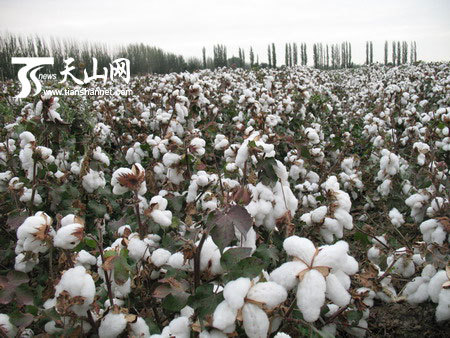Xinjiang Production and Construction Corps (XPCC), a key producer of quality cotton in northwest China, will reduce the farmland area dedicated to the cash crop in the next three years.
 |
|
In the photo taken on November 25, 2008 is a?cotton field?run by??the Xinjiang Production and Construction Corps (XPCC), a key producer of quality cotton in northwest China. |
The plan was announced by Nie Weiguo, deputy secretary of Xinjiang Uygur Autonomous Regional Committee of the Communist Party of China (CPC) and also XPCC political commissar, at a meeting held Thursday.
According to the plan, XPCC will lower its present dedicated cotton land of 560,000 hectares to 433,333 hectares by 2011. XPCC is an independent unit under the state plan.
The land will be used to grow grains instead. Presently, the area dedicated to grains production in XPCC is 233,333 hectares. XPCC authorities hope that their grain output will exceed 1.4 million tonnes a year.
The Party official cited factors, including rising costs and falling profits of cotton farming and the need to improve regional grain self-sufficiency as reasons for the adjustment in agricultural production.
He declined to comment on the impact that this plan will have on the national cotton output.
XPCC is expected to produce 1.3 million tonnes of cotton this year, a rise of 4.2 percent over last year. Its grain output will top 1.38 million tonnes this year, up 14.1 percent, according to Nie.
Nationwide, China produced more than seven million tonnes of cotton last year. The country's output of the same crop will top 7.8 million tonnes this year, according to China Cotton Association.
It is not immediately known whether XPCC's plan to increase grain areas by reducing cotton farmland is directly related to a decision made by the State Council, China's Cabinet, to keep the nation's annual grain output above 500 million tonnes by 2010 or raise production capacity beyond 540 million tonnes a year by 2020.
(Xinhua News Agency Decembe 26, 2008)